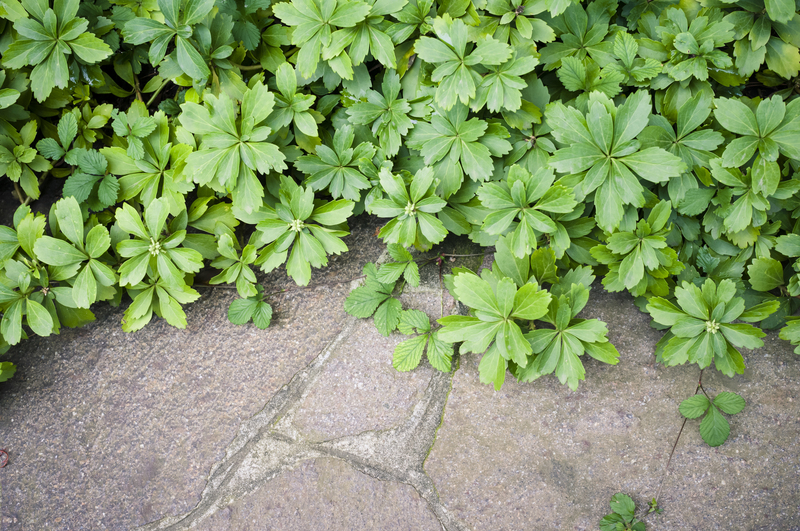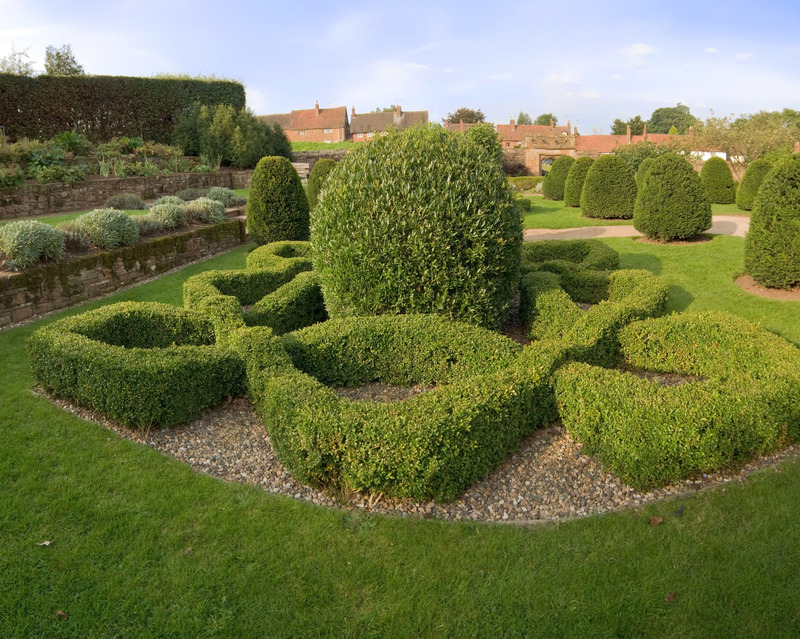Orchid Care Demystified: A Step-by-Step Approach
Posted on 01/09/2025
Orchid Care Demystified: A Step-by-Step Approach
Do you dream of turning your living space into a lush paradise filled with vibrant orchids, but feel intimidated by their reputed fussiness? You're not alone! Orchids have long captivated gardeners and plant lovers alike with their stunning blooms and intriguing mystique. Yet, caring for these exquisite plants is often shrouded in confusion and misunderstanding. This comprehensive guide aims to demystify orchid care and offer you a clear, step-by-step approach to successfully growing and enjoying these unique houseplants.
Understanding Orchids: Debunking Common Myths
Orchids get a bad rap for being fragile and difficult, but the reality is, many popular orchids are quite resilient and forgiving when their fundamental needs are met. By incorporating a basic understanding of their natural habitat, you can tailor your orchid care routine for thriving, healthy plants.
Most Popular Types of Orchids for Home Growers
- Phalaenopsis (Moth Orchid) - Easy care, ideal for beginners.
- Cattleya - Known for large, fragrant blooms.
- Dendrobium - Variety in color, shape, and size.
- Oncidium - "Dancing Lady" flowers, likes brighter light.
- Paphiopedilum (Lady Slipper) - Unique pouch-like flowers.
Tip: Most beginner guides focus on Phalaenopsis orchids, since they're the most commonly available and adaptable.

Getting Started: The Right Environment for Orchids
1. Light: Mimicking Nature's Balance
Orchids hail from tropical regions, where they grow under a canopy of trees. This means they're accustomed to bright, indirect light. Direct sunlight can scorch their leaves, whereas too little light hampers blooming.
- Phalaenopsis: East or west-facing windows work best, or behind sheer curtains in brighter spots.
- Dendrobium, Cattleya, Oncidium: Prefer slightly more light, such as a south-facing window with filtered light.
Leaf Color as a Guide: Healthy orchid leaves are bright, grassy green. Dark green indicates not enough light; yellowish tones mean too much.
2. Temperature: Warmth is Key
- Orchids prefer temperatures between 65?F to 80?F (18?C - 27?C) during the day and about 10?F lower at night. Slight drops in nighttime temperature can actually stimulate flowering!
- Avoid cold drafts or sudden temperature changes, which can stress orchids.
3. Humidity: Emulating Tropical Air
Orchids flourish in humidity levels of 50-70%. Most homes run dryer, especially in winter, so extra effort may be needed.
- Group orchids together to raise local humidity.
- Use a humidity tray filled with pebbles and water.
- Regular misting (avoid drenching flowers/leaves).
- Use a room humidifier for consistent moisture.
Step-by-Step Orchid Care Routine
Step 1: Proper Watering Techniques
Overwatering is the number one killer of home-grown orchids. Understanding your particular orchid's needs and the environment is critical.
- Check the roots and potting mix before watering; let the mix dry out almost completely between waterings.
- Typically, water every 7-10 days for Phalaenopsis; adjust based on temperature and humidity.
- Use room-temperature, distilled, or rainwater if possible.
- Water early in the day to allow foliage to dry by nightfall, preventing rot.
Rule of Thumb: If in doubt, underwater rather than overwater!
Step 2: Choosing the Right Orchid Potting Mix
Unlike typical houseplants, orchids don't grow in soil. They need a special, chunky mix that mimics their natural epiphytic habitat.
- Bark-based mixes: Most common for Phalaenopsis and Cattleya.
- Sphagnum moss: Retains moisture well, ideal for young plants, but beware of overwatering.
- Charcoal, perlite, and coconut husk chips may be added for drainage and airiness.
Replace your orchid mix every 1-2 years to avoid breakdown that hinders drainage.
Step 3: Repotting Orchids
Repotting is necessary every 1-2 years, or when the potting media decomposes, roots overgrow the container, or pests/disease strike.
- Remove the orchid from its pot, gently shaking off old mix.
- Trim dead or blackened roots with sterilized scissors.
- Choose a pot just big enough to fit the roots, preferably with drainage holes.
- Settle the roots into fresh potting mix, packing gently but firmly.
- Water sparingly for the first week to aid recovery.
Pro tip: Never use regular garden soil for orchids!
Step 4: Fertilizing for Fabulous Blooms
Orchids require gentle, regular feeding during their growing season (usually spring through fall) and less during dormancy.
- Use a balanced, water-soluble fertilizer (20-20-20, or one formulated for orchids).
- Feed "weakly, weekly": At one-quarter to half strength, every other watering.
- Flush pots monthly with pure water to avoid fertilizer salts build-up.
Step 5: Encouraging Orchid Reblooming
Learning to rebloom an orchid is the ultimate sign that your care is on point!
- Once the initial bloom fades, cut Phalaenopsis spikes above a node to encourage new flower spikes.
- Bright indirect light and a slight nighttime temperature drop help trigger blooming.
- Avoid overfertilizing or drastic changes in environment during this period.
Routine Maintenance and Troubleshooting Tips
Monitoring Orchids for Pests and Diseases
While orchids are generally hardy, they can fall prey to some common houseplant pests and diseases.
- Watch for mealybugs, aphids, spider mites, and scale. Wipe leaves with a soapy solution or use neem oil as needed.
- Fungal/bacterial leaf spots can be controlled by increasing airflow and keeping foliage dry.
- Root rot is almost always caused by overwatering. Always use a drained pot and proper mix!
Orchid Leaf and Root Health
- Healthy leaves: Firm and green (not wrinkled or floppy).
- Healthy roots: Plump and white/green with silver sheen.
- Browning or mushy roots indicate rot--trim with sterile snips.
Seasonal Orchid Care Adjustments
- Winter: Reduce watering; ensure no cold drafts on plants; supplement with grow lights if days are short.
- Summer: Increase humidity and ventilation; avoid midday sun exposure on leaves.
Advanced Orchid Care: Tips for Enthusiasts
Specialty Orchid Types and Their Care Needs
- Cattleya orchids need more sunlight and tolerate drying out better than other species.
- Lady Slipper orchids (Paphiopedilum) require more consistent moisture and less intense light.
- Dendrobiums often benefit from a drier rest period post-bloom.
Research your specific orchid species for tailor-made care!
Orchid Propagation
Orchids can be propagated through division, backbulbs, or keikis (baby plants that form on flower spikes or canes).
- For division, split healthy plants during repotting, ensuring plenty of healthy roots on each piece.
- For keikis, allow them to grow roots 2-3 inches long, then carefully remove and pot them separately.
Display and Decor Ideas for Your Orchids
- Group orchids in decorative shallow trays with pebbles for humidity and style.
- Use glass containers or cache pots, ensuring the inner pot still drains freely.
- Combine with other tropicals for a dramatic, indoor jungle effect.

Frequently Asked Questions About Orchid Care
- Why won't my orchid bloom? Most likely, insufficient light or lack of a nighttime temperature drop.
- Can I use ice cubes to water my orchid? While popular, this method can shock roots. Water thoroughly instead.
- What if my orchid loses all its flowers? This is normal. With proper care, it will rebloom, sometimes even stronger.
Conclusion: Orchid Care Made Simple
With the right knowledge and a little practice, caring for orchids is far from the mysterious challenge it's made out to be. By following this step-by-step orchid care approach, you'll join countless others who have successfully transformed their homes with these remarkable, resilient plants. Remember: The key is attention to environment, restraint with watering, and periodic repotting and feeding. With this comprehensive guide, you're ready to enjoy abundant, long-lasting orchid blooms and reveal the magic of orchid cultivation for yourself!
Happy growing! Your journey into successful orchid care begins today. Bookmark this guide and return to it often to ensure your orchids remain healthy, vibrant, and beautiful all year round.
```


